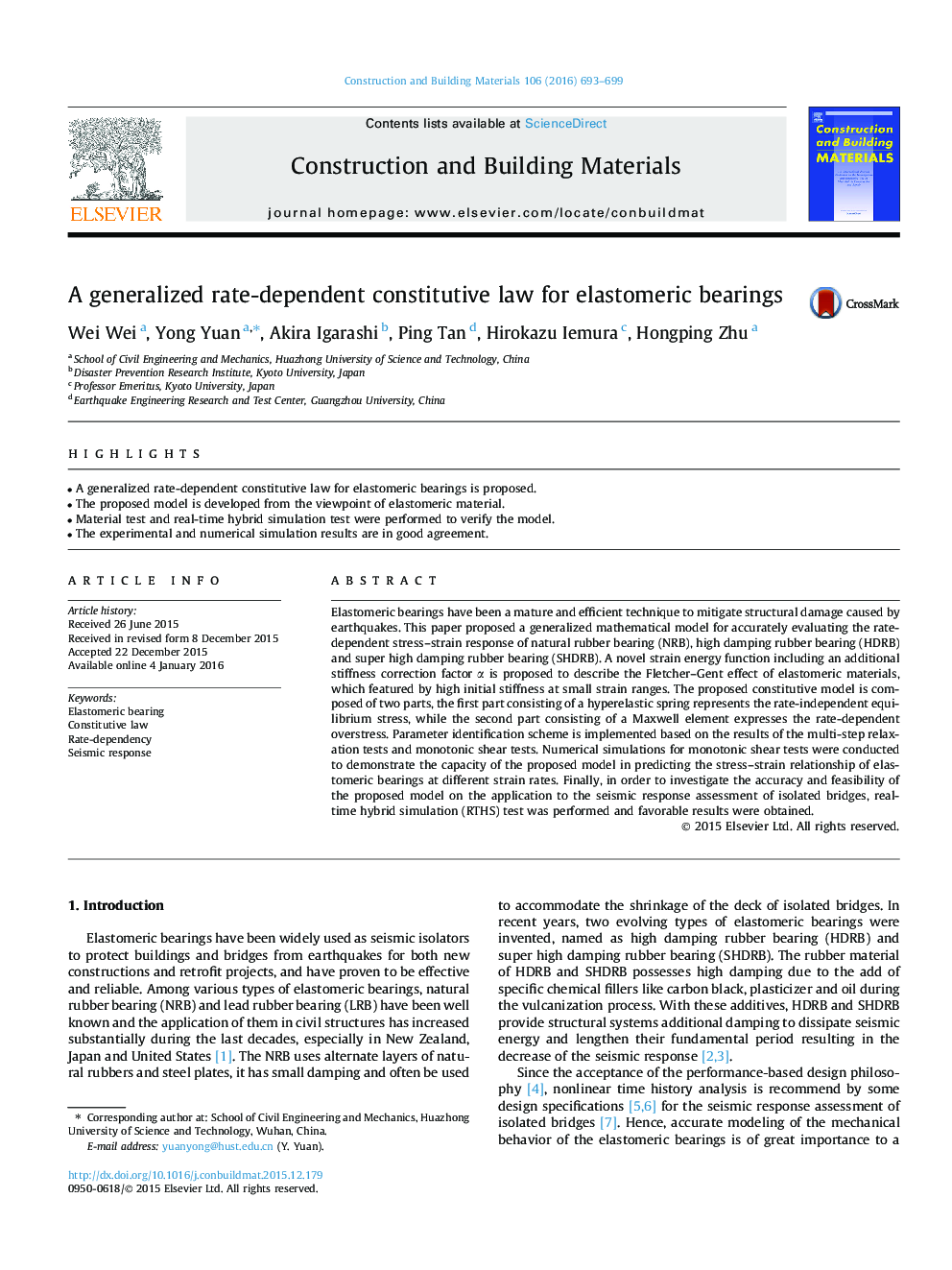| Article ID | Journal | Published Year | Pages | File Type |
|---|---|---|---|---|
| 256530 | Construction and Building Materials | 2016 | 7 Pages |
•A generalized rate-dependent constitutive law for elastomeric bearings is proposed.•The proposed model is developed from the viewpoint of elastomeric material.•Material test and real-time hybrid simulation test were performed to verify the model.•The experimental and numerical simulation results are in good agreement.
Elastomeric bearings have been a mature and efficient technique to mitigate structural damage caused by earthquakes. This paper proposed a generalized mathematical model for accurately evaluating the rate-dependent stress–strain response of natural rubber bearing (NRB), high damping rubber bearing (HDRB) and super high damping rubber bearing (SHDRB). A novel strain energy function including an additional stiffness correction factor α is proposed to describe the Fletcher–Gent effect of elastomeric materials, which featured by high initial stiffness at small strain ranges. The proposed constitutive model is composed of two parts, the first part consisting of a hyperelastic spring represents the rate-independent equilibrium stress, while the second part consisting of a Maxwell element expresses the rate-dependent overstress. Parameter identification scheme is implemented based on the results of the multi-step relaxation tests and monotonic shear tests. Numerical simulations for monotonic shear tests were conducted to demonstrate the capacity of the proposed model in predicting the stress–strain relationship of elastomeric bearings at different strain rates. Finally, in order to investigate the accuracy and feasibility of the proposed model on the application to the seismic response assessment of isolated bridges, real-time hybrid simulation (RTHS) test was performed and favorable results were obtained.
